How Far Do Roller-Grill Hot Dogs Travel?
And if we just let ‘em run, how far might they go?
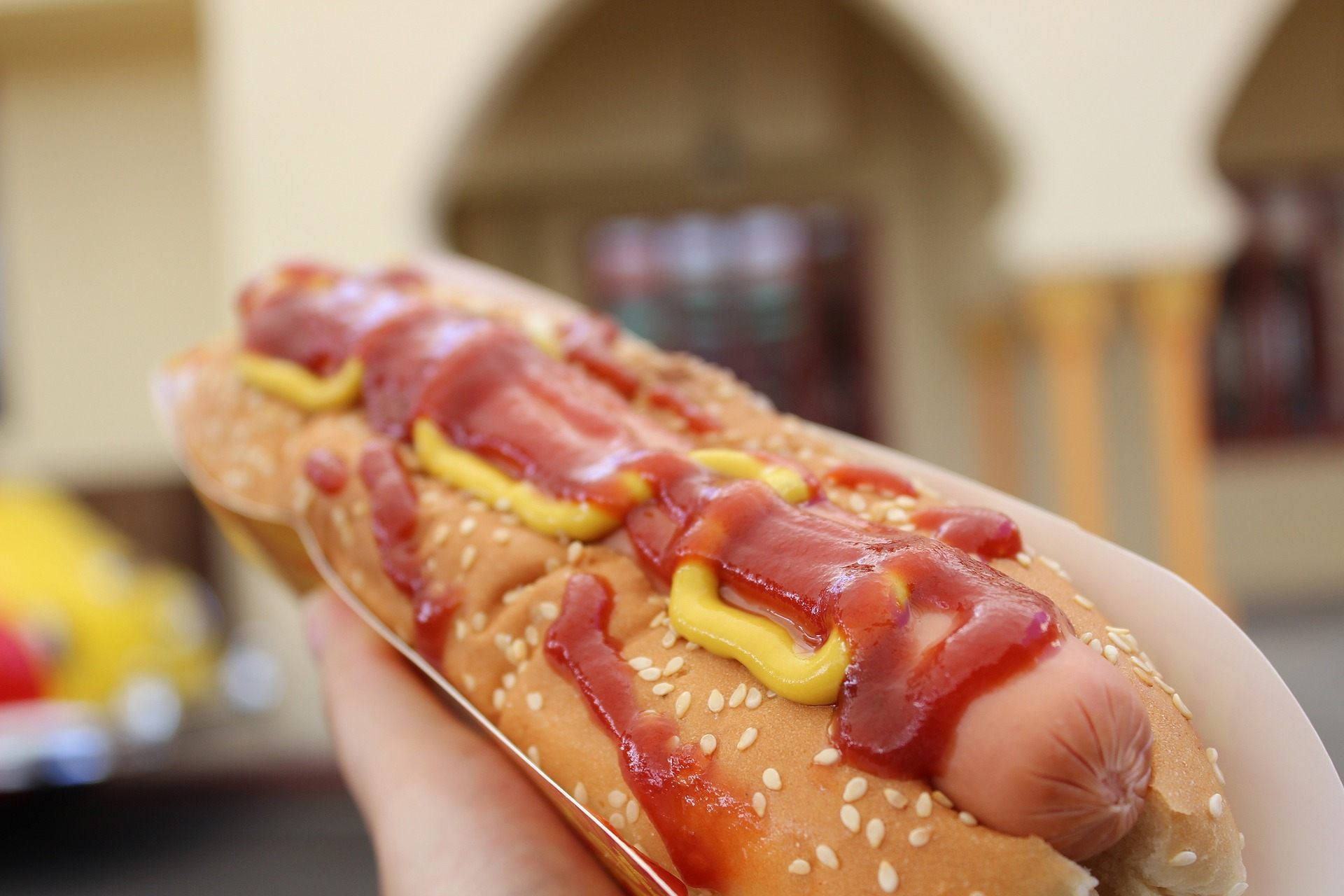
Gas station hot dogs don’t take breaks. You may pull into a rest stop, refill your car’s tank, empty your own, grab some snacks, and peel out again. The whole time, the dogs will have been rotating, slowly, on their shiny metal rollers. When you finally turn in for the night, they may be turning still.
Once it has begun its treadmill journey, how far does your average hot dog go before it’s sent to the Great Bun in the Sky? And if, for some reason, it kept going—spinning slowly, hour after hour and year after year—how far could it eventually get?
Some Background
Hot dogs haven’t always been a food in constant motion. Although the earliest patent for a roller-grill machine was submitted way back in August of 1939, a successful commercial version wasn’t developed until the 1950s, when a prolific engineer named Calvin Dodd MacCracken decided to apply his temperature-regulation know-how to the problem of lukewarm frankfurters.
Over his lifetime, MacCracken would file over 90 patents, for everything from aluminized ceilings for hockey arenas to cooling systems for spacesuits. But the Roll-A-Grill, as MacCracken dubbed it, may be his most lasting legacy.
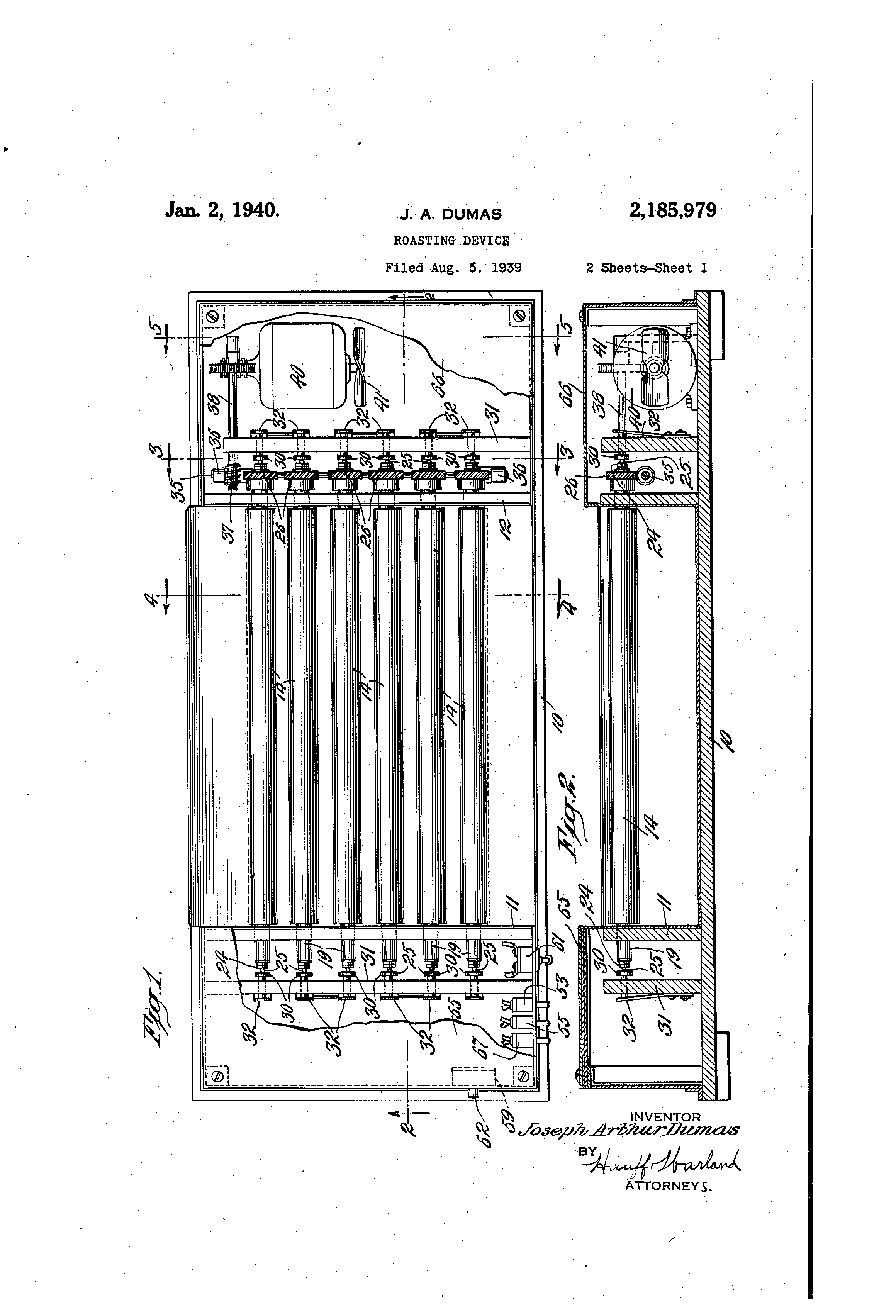
The machine quickly became a mainstay in snack bars and sports stadiums. Marketers emphasized how it could “stop traffic with its fascinating slow rotary motion.” In this way, an old dog was taught new tricks.
Over the intervening decades, various companies have created customized hot dog rollers for gas stations, convenience stores, and even home use. These days, hot dogs across the world spend their lives slowly traveling nowhere. But how far does the average hot dog go in treadmill miles?
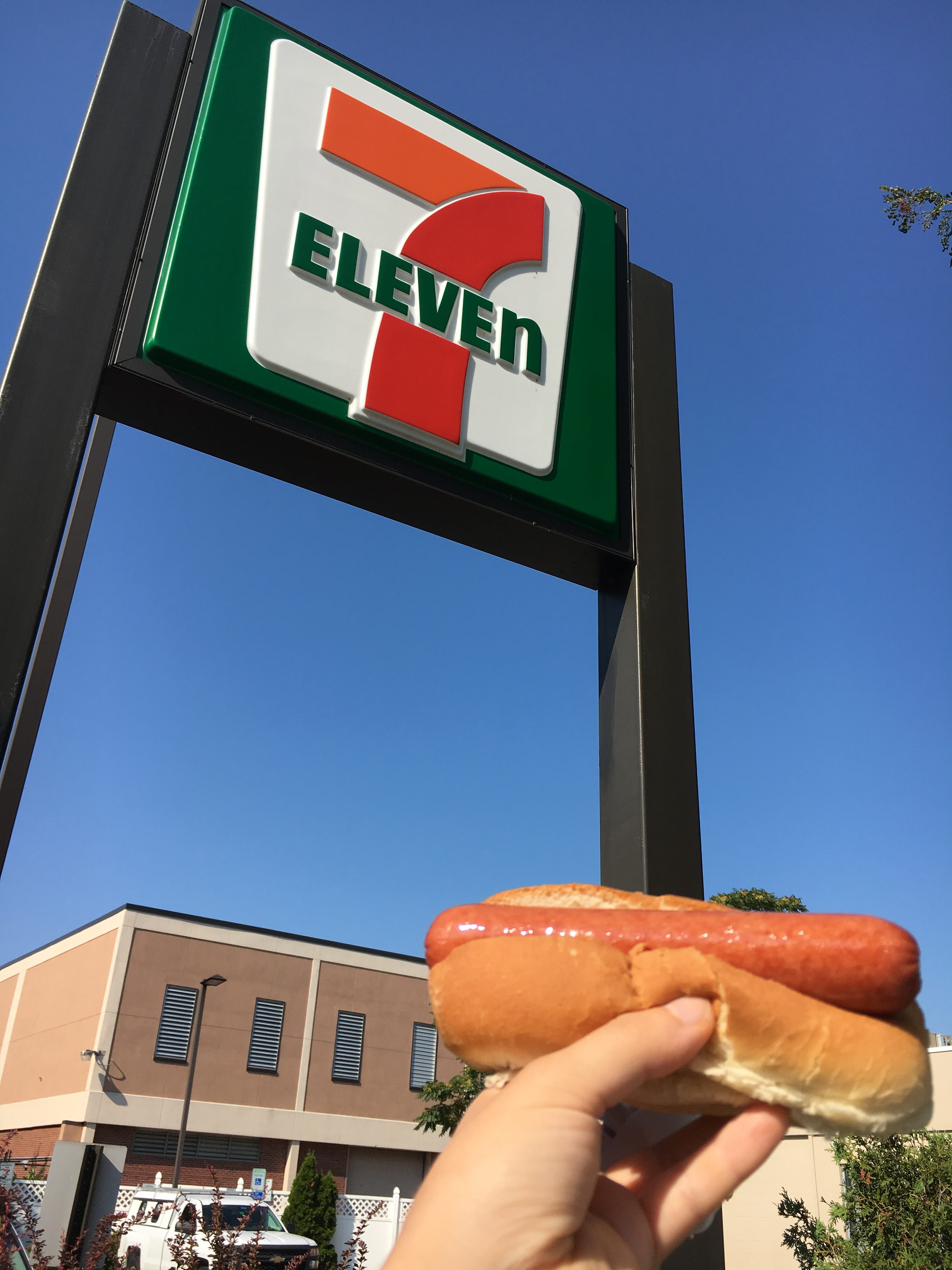
Kickoff Experiment
Summer is a time for taking idle thoughts too far, so I decided to investigate the hot dog-distance question. To start off—and to set some experimental parameters—I spent a July afternoon hanging around my own local hot dog roller, which takes up much of the front area of a 7-Eleven in Somerville, Massachusetts. I was looking to gather three pieces of data: the circumference of an average dog, the speed of the hot dog roller, and the maximum length of time a hot dog could spend spinning before it was discarded.
The first data point—girth—was easy. I purchased three regular-sized “Big Bite” hot dogs, a bag of gummy worms, and a child’s ruler. I then de-bunned each dog, wrapped a gummy worm once around the middle of a hot dog, marked the spot where the worm intersected itself, bit down, and measured it.
As I suspected, 7-Eleven hot dogs—which, like all hot dogs, are made by extruding puréed beef trimmings into solid cellulose tubes—exhibit stunning uniformity in size. For the purpose of this experiment, I averaged the measurements, and set the circumference of a 7-Eleven Big Bite at 7.9 cm.
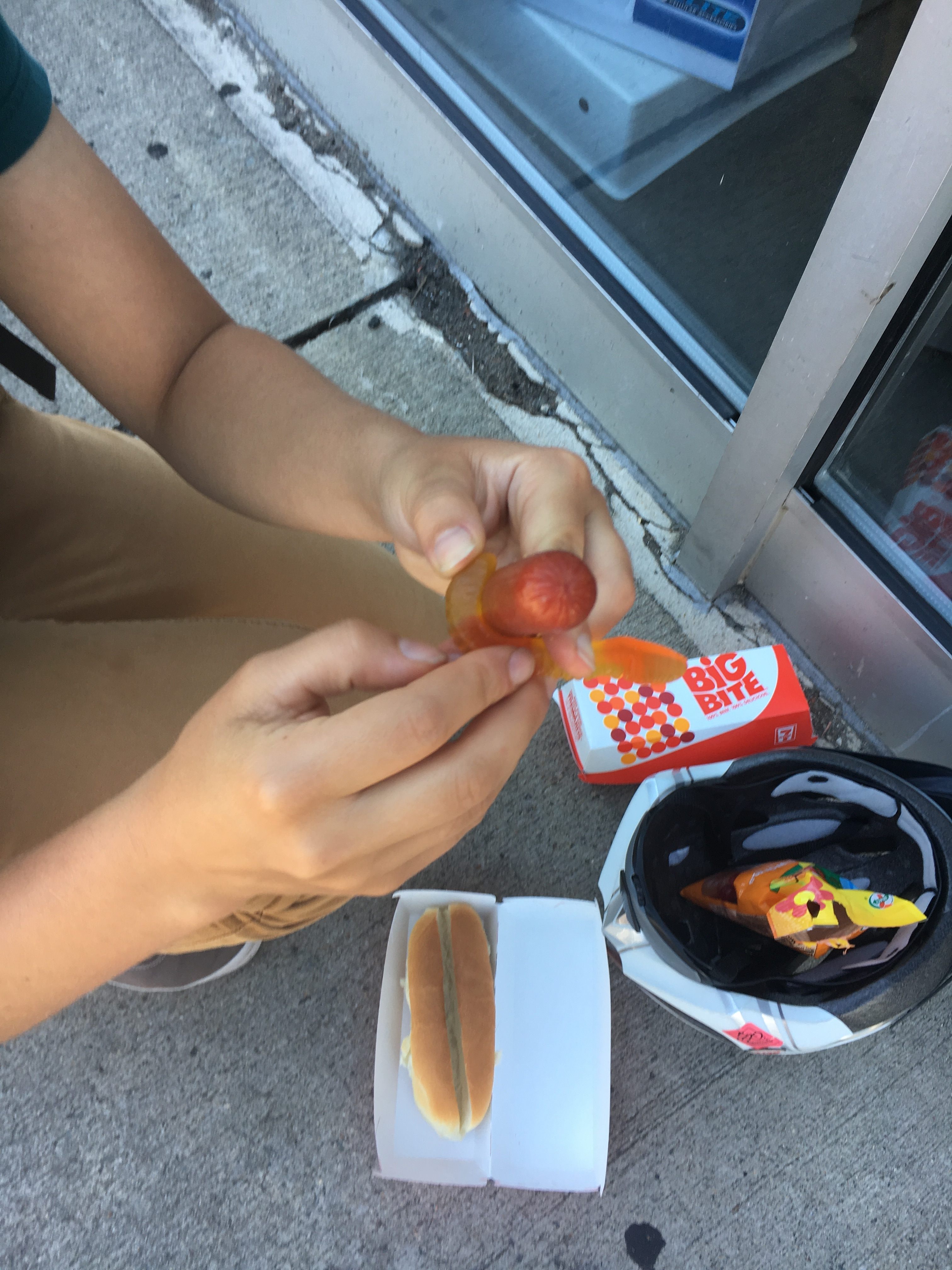
The second data point—roller speed—was tougher. Different 7-Eleven locations use different makes and models of rollers, chosen from a list approved by the franchise. This particular roller had no identifying marks or branding, and the store attendant did not know what kind it was.
But my local 7-Eleven had positioned a clock with a second hand right behind the roller grill, presumably for this express purpose. My companion and I chose a hot dog with a distinctive divot mark and timed ten full revolutions. We then used the “lap” timer on my phone to get a more precise measurement. After several trials, we compared notes, and came up with an average Big Bite treadmill speed of 7.53 rotations/minute.
The third data point—maximum roller time—was the slipperiest of all. A dive into the 7-Eleven franchise agreement revealed that hot food served at every location must exhibit “compliance with all applicable laws, regulations and codes, including the U.S. Food & Drug Administration Model Food Code.”
As for those codes, the USDA’s Food Safety and Inspection Service (FSIS) has ruled that hot dogs can roll for four or eight hours if they remain heated above certain temperatures.* Or, if they stay above 140 degrees Fahrenheit, they can roll “indefinitely.”
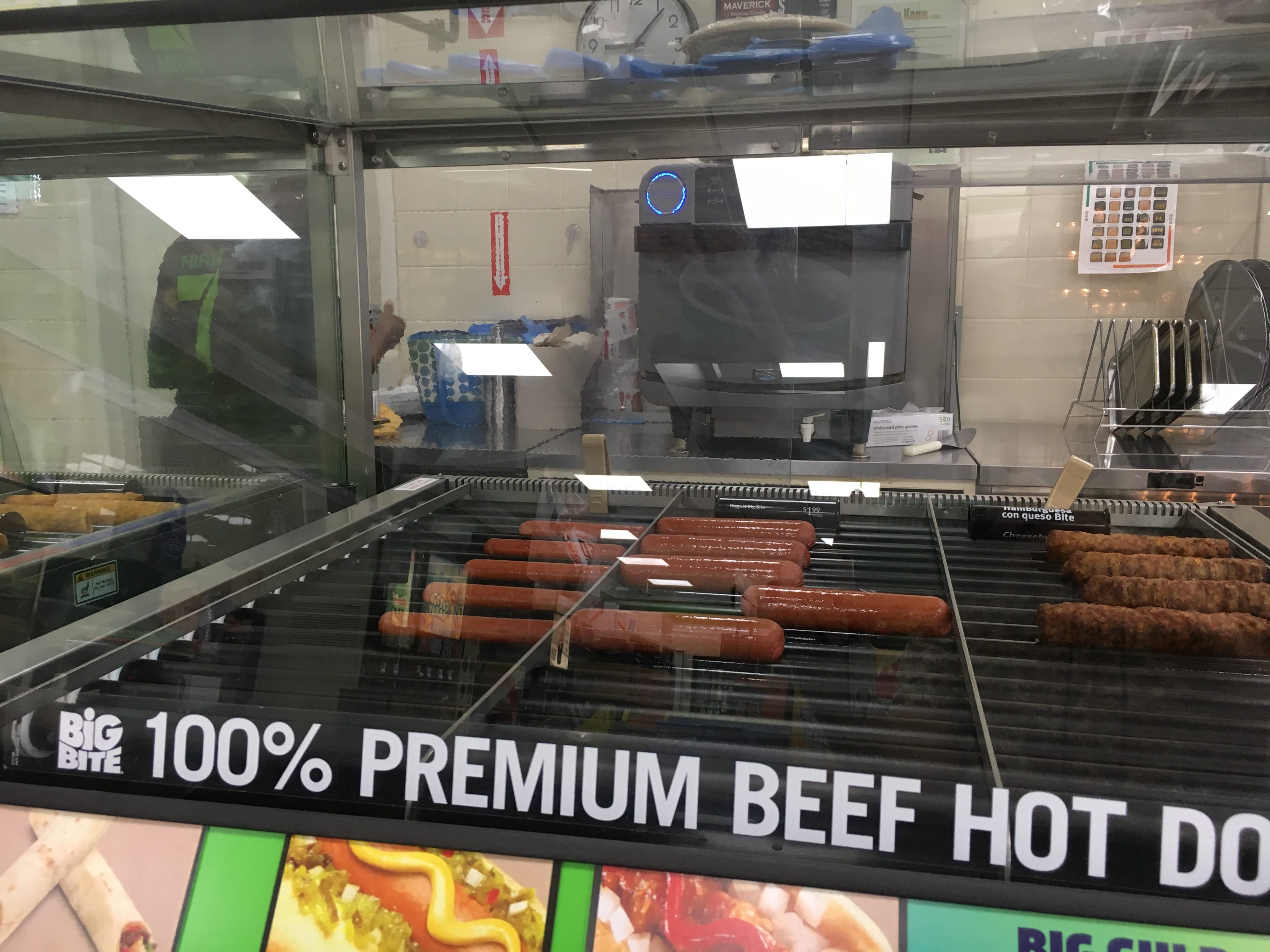
But convenience store foods do not always conform to laws, of man or nature. Further investigation seemed necessary. When I asked the (very patient) attendant how long the hot dogs stayed on the grill, he clocked it for me at “about an hour.” (As of press time, 7-Eleven had not responded to a request for comment.)
Although I didn’t doubt my local attendant, his response gave me pause. To me, the FSIS’s big shoulder-shrug came closer to matching the prevailing cultural conception of gas station hot dogs. I have seen other writers fondly refer to these snacks rolling “for indeterminable amounts of time,” “for hours on end,” and “from dawn until dusk, and then a little bit after dusk.”
They also didn’t match my own experience. In anticipation of this study, I had gotten in the habit of ducking into the 7-Eleven, taking a look at the hot dogs, noting any distinguishing characteristics, marking down their positions in a small notebook, and returning later to see if they had moved.

Through these maneuvers, I observed, on several occasions, hot dogs that appeared to have stayed on the treadmill for three or four hours.
In order to give credit where credit is due, I decided to set my maximum roller time at 3 hours and 22 minutes—the longest that I can vouch for an individual hot dog having been on the roller grill. This one had a dent on its left side, and was spotted on a Monday night on my way to and from a long movie.
The Result
Taking the official Hot Dog Distance Calculation, with MRT standing for maximum roller time:
(hot dog circumference) * (roller speed) * (MRT) = distance traveled
And plugging in the relevant data:
7.9 cm / rot * 7.53 rot / min * 202 min = 12016.37 cm = .074 miles
The longest-traveled hot dog yet recorded in Massachusetts has gone .074 miles. If it were moving down a track rather than in place, its lifespan would have taken it from the starting line to a little past the first curve.
But What If…?
Now that we have some numbers down, I see no harm in engaging in a little speculation. After all, when hot dogs spin in place, they’re probably dreaming.

Your Turn
One hot dog does not a definitive account make. It’s quite possible that your local hot dogs are larger, faster, or stronger. They may stay cycling on their grills for days, or even weeks.
So help us figure out: from whence the best-traveled hot dog? Is it from New York or Chicago? A highway rest stop or a baseball stadium? Wawa or Sheetz?
Or if you’d rather: What hot dog adventures can you imagine? If a dog took a journey of your choosing, how long would it take?
Send these musings to us, along with any procedural comments, at cara@atlasobscura.com. May the best hot dog win.
*Correction: This post previously stated that U.S. law limited hot dogs to two hours of rolling time on a heated grill.
Gastro Obscura covers the world’s most wondrous food and drink.
Sign up for our regular newsletter.


























Follow us on Twitter to get the latest on the world's hidden wonders.
Like us on Facebook to get the latest on the world's hidden wonders.
Follow us on Twitter Like us on Facebook